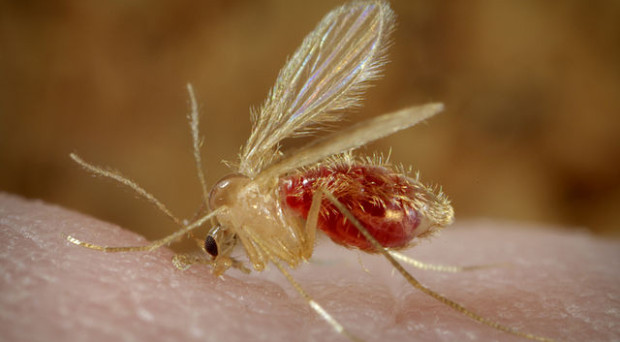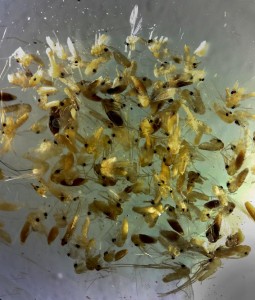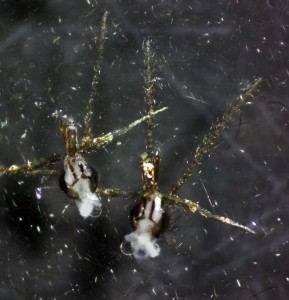
Sandflies may be smaller than mosquitoes but their bite still packs quite a punch. They are pool-feeders, meaning that in order to engorge in the precious fluid, they need to tear into tissues and blood vessels. But this is not a one way street. As they feed, they inject into the wound their saliva: a powerful cocktail of proteins and other components meant to arrest all natural healing and immune responses that start the very second there is damage to your skin.
You will remember a sandfly bite. Whether you want to or not.
After repeated exposure to their painful little pricks, our immune system develops antibodies against the sandfly’s saliva, which we can then measure as an indicator of how much the unfortunate subject has been preyed upon. We can use this information to monitor exposure in different populations and determine any changes of disease risk. The more bites you get, the greater the chances are of being infected with Leishmania. This parasite threatens over 350 million people around the world, causing different clinical signs that range from disfiguring and stigmatizing ulcers to the deadlier visceral form of the disease. And even though sandflies are (in)famous for transmitting leishmaniasis, they can also spread viruses and bacteria.
In the Kingdom of Saudi Arabia, cutaneous leishmaniasis (CL) remains a public health problem of great

concern. Most cases are caused by Leishmania major, and transmitted by the vector sandfly Phlebotomus papatasi. The salivary protein SP32 of this sandfly is species-specific, and its high immunogenicity makes it a useful biomarker (an indicator of a biological state) to determine exposure in different populations. In our recently published work we set out to measure the human level of antibodies against a recombinant version of this SP32, to compare levels of exposure to Ph. papatasi bites between different groups of people: healthy vs infected with leishmaniasis, and locals vs non-locals (immigrant workers).
We found that individuals with a leishmaniasis infection had higher levels of antibodies, which means they are more exposed to the saliva than healthy individuals. It has been reported that, after leishmaniasis patients were hospitalized for treatment, the temporary isolation from sandfly bites resulted in lowered anti-saliva antibodies. This strongly supports the use of sandfly salivary proteins as biomarkers to study disease risk and its variation through time, and also for the evaluation of vector control effectiveness.
Now, our second set of results is quite intriguing. When we looked at the antibody levels in CL patients, we found that working visitors, who had been in Saudi Arabia for less than a year, had higher antibody levels than those living their whole lives in the endemic foci. Does this indicate they are more exposed? Both living and working conditions for this particular group means they are inevitably exposed in high intensity to sandfly biting. Our results provide further confirmation of this. What’s more, they also seem to suffer worse clinical outcomes as evidenced by increased severity and number of lesions.

Our published (and ongoing) work has the potential to support health policy in Saudi Arabia regarding the control of leishmaniasis vectors in the different endemic areas, particularly for foci with ongoing development projects, where it will help to detect human groups at greater risk and to plan control measures accordingly. Human migration, particularly in the context of conflict, is known to initiate leishmaniasis outbreaks in places like the Middle East and South America by exposing susceptible individuals to sandflies and leishmaniasis. Further research and use of biomarkers would be useful aids.
Does it mean we should allow all sandflies bite us to their hearts content? No, not really. It turns out that the human response to sandfly saliva can vary greatly according to the species. Another recently published study by Carvalho and colleagues found that the effect of natural prolonged exposure to Lutzomyia intermedia, a New World sandfly species, actually increased the risk of acquiring cutaneous leishmaniasis. The striking variation in these dynamics explains the current explosion of research invested in the saliva of the different vector species. The promise of a vaccine that combines vector and sandfly proteins is a powerful motivator in this process.

Comments